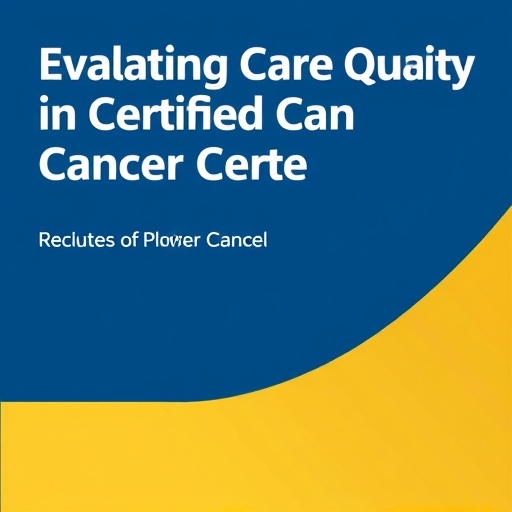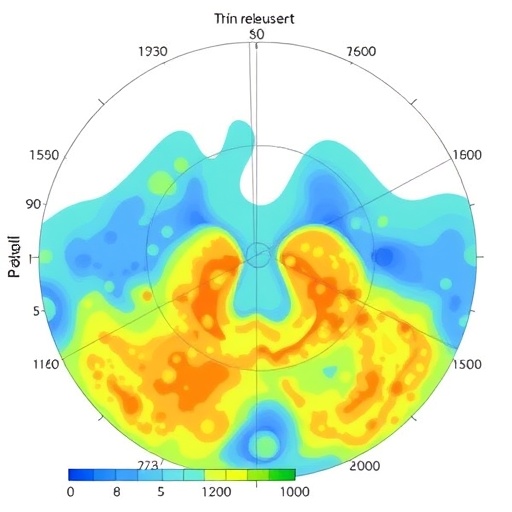ESMO Breast Cancer Congress, May 2-4, 2019, Berlin, Germany

Credit: European Society for Medical Oncology
Lugano, Switzerland, 30 April 2019 – Continuous chemotherapy shows greater benefit in patients with advanced breast cancer by both improving survival and maintaining quality of life compared to intermittent scheduling, according to analyses of the Stop&Go study presented at the ESMO Breast Cancer Congress 2019, 2-4 May, Berlin, Germany. (1,2,3)
The phase III study randomised 420 patients with advanced HER2-negative breast cancer to either an intermittent schedule (four cycles – ‘treatment holiday’ – another four cycles) or a continuous schedule comprised of the same eight cycles administered consecutively. Both first line treatment (paclitaxel plus bevacizumab) and second line treatment (capecitabine or non-pegylated liposomal doxorubicin) followed these schedules. These analyses report on secondary endpoints from the Stop&Go study, with the main endpoint for second-line being progression-free survival (PFS).
Dr Frans Erdkamp from Zuyderland Medical Center – Sittard-Geleen, Netherlands, presented findings related to the survival benefits of continuous scheduling in both first- and second-line chemotherapy compared to intermittent therapy. “Our main focus in this analysis was on the efficacy of second-line treatment, although, interestingly, the updated overall survival results showed that for the whole population (those who received first line only, or first and second lines of treatment) the survival was better with continuous treatment as well,” said Dr Erdkamp.
Patients who started second line treatment (n=270; 131 vs. 139 in intermittent vs. continuous arms) demonstrated a median PFS in second line of 3.5 vs. 5.0 months respectively, with a hazard ratio (HR) of 1.04 (95%CI 0.69-1.57). The median combined first- and second-line PFS for this population was 14.6 vs. 16.6 months with a HR of 1.59 (95%CI 1.04 – 2.45).
The quality of life results were presented by Dr Anouk Claessens, also from Zuyderland Medical Center – Sittard-Geleen, Netherlands. “In clinical practice, we see considerable variation in treatment strategies, so felt it would be helpful to conduct a trial investigating the effect on quality of life of scheduling with modern agents.” Claessens hypothesised that treatment holidays incorporated into scheduling would benefit quality of life.
Quality of life was measured every 12 weeks during treatment and follow-up, using RAND-36 questionnaires specifically chosen for their relevance to normal life. The course of both the physical and mental quality of life scores for each sequencing arm were monitored and the difference in course was estimated between arms. Median follow-up was 11.3 months.
“With the physical quality of life scores, we saw a linear decline in the intermittent arm causing a clinically meaningful difference of 5.68 points at 24 months (p
“Comparison of the course of quality of life between the treatment arms (showed the maximum differences were not statistically significant but there was a trend for more favourable scores in the continuous arm,” added the researcher.
“Based on our findings, you could hypothesise that the benefits of a continuous approach might be independent of the investigated treatment line and might apply to other lines of treatment as well,” said Claessens. “The challenge for clinical practice is to use agents that are well tolerated and can be continued for a prolonged period without interruptions,” she added.
Co-investigator, Dr Monique Bos, from Erasmus University Medical Center, Rotterdam, Netherlands, remarked: “We were a little surprised at the findings running contrary to our hypothesis. In explaining therapy schedules to patients we tend to suggest that a ‘holiday’, by nature of the word, might be beneficial, but this was not the case.”
Commenting on the results, Professor Nadia Harbeck from the University of Munich (LMU), Germany, said: “Both studies con-firm the current national and international guidelines (4) that chemotherapy, preferentially monotherapy – at least after first line, should be given continuously, as long as it is well tolerated and effective. Until now, we’ve only had evidence from older studies, with regimens no longer used, indicating that continuous chemotherapy in metastatic disease is better than shorter. The new Stop&Go data confirm these older data also with more modern regimens.”
“The result that continuous chemotherapy is not at all associated with worse quality of life is clinically meaningful,” said Harbeck. “and further highlights the importance of preferring to administer chemotherapy continuously for benefiting the most our patients with advanced disease”.
###
Notes to Editors
Please make sure to use the official name of the meeting in your reports: ESMO Breast Cancer Congress 2019
Official Congress Hashtag: #ESMOBreast19
Disclaimer
This press release contains information provided by the authors of the highlighted abstracts and reflects the content of these abstracts. It does not necessarily reflect the views or opinions of ESMO who cannot be held responsible for the accuracy of the data. Commentators quoted in the press release are required to comply with the ESMO Declaration of Interests policy and the ESMO Code of Conduct.
References
1 ESMO Breast Cancer Congress: https:/
2 Abstract 158P_PR ‘Intermittent versus continuous chemotherapy beyond first-line for patients with HER2-negative advanced breast cancer (BOOG 2010-02)’ will be presented by Anouk Claessens during the Poster Display session on Friday 3 May, 12:15 to 13:00 (CEST) in the Exhibition area. Annals of Oncology, Volume 30, 2019 Supplement 3, doi:10.1093/annonc/mdz095
3 Abstract 159P_PR ‘Influence on quality of life of chemotherapy scheduling for patients with advanced HER2-negative breast cancer’ will be presented by Anouk Claessens during the Poster Display session on Friday 3 May, 12:15 to 13:00 (CEST) in the Exhibition area. Annals of Oncology, Volume 30, 2019 Supplement 3, doi:10.1093/annonc/mdz095
4 4th ESO-ESMO International Consensus Guidelines for Advanced Breast Cancer (ABC 4): https:/
About the European Society for Medical Oncology (ESMO)
ESMO is the leading professional organisation for medical oncology. With more than 20,000 members representing oncology professionals from over 150 countries worldwide, ESMO is the society of reference for oncology education and information. ESMO is committed to offer the best care to people with cancer, through fostering integrated cancer care, supporting oncologists in their professional development, and advocating for sustainable cancer care worldwide.Visit http://www.
158P_PR – Intermittent versus continuous chemotherapy beyond first-line for patients with HER2-negative advanced breast cancer (BOOG 2010-02)
F.L.G. Erdkamp1, A.K.M. Claessens1, M. Lopez-Yurda2, J.M. Bouma3, H. van Tinteren2, J.M. Rademaker-Lakhai4, A.H. Honkoop5, H. de Graaf6, V.C.G. Tjan-Heijnen7, M.M.E.M. Bos8
1Internal Medicine – Oncology, Zuyderland Medical Center – Sittard-Geleen, Sittard-Geleen, Netherlands, 2Biometrics, Netherlands Cancer Institute, Amsterdam, Netherlands, 3Trial registration, Comprehensive Cancer Centre the Netherlands, Rotterdam, Netherlands, 4BOOG study center, Dutch Breast Cancer Re-search Group, Amsterdam, Netherlands, 5Medical Oncology, Isala Klinieken, Zwolle, Netherlands, 6Medical Oncology, Medical Center Leeuwarden, Leeuwarden, Netherlands, 7Medical Oncology, Maastricht University Medical Center+ (MUMC+), Maastricht, Netherlands, 8Medical oncology, Erasmus University Medical Center, Rotterdam, Netherlands
Background: This study investigates efficacy and safety of intermittent versus continuous scheduling of chemotherapy over two treatment lines for patients within the Stop & Go trial.
Methods: Participants were randomized to two sets of four cycles (intermittent) or eight consecutive cycles (continuous) of chemotherapy in two treatment lines. First-line consisted of paclitaxel plus bevacizumab, second-line of capecitabine or non-pegylated liposomal doxorubicin. The primary endpoint of the present study was progression-free survival (PFS) of second-line treatment.
Results: Characteristics at randomization were well-balanced. Patients with a good baseline performance status, only non-visceral metastasis, longer disease-free-interval, and HR-positive disease more often started second-line study treatment. For patients who started second line study treatment (n=270; 131 vs. 139 in intermittent vs. continuous arm) median PFS in second-line was respectively 3.5 vs. 5.0 months with a Hazard Ratio (HR) of 1.04 (95%CI 0.69-1.57), and median OS in second-line was 10.6 vs.12.0 months, with a HR of 1.64 (95%CI 1.08 – 2.48). The median combined first- and second-line PFS for this population was 14.6 vs. 16.6 months with a HR of 1.59 (95%CI 1.04 – 2.45), and median OS measured from randomization was 20.3 vs. 23.0 months with a HR of 1.93 (95%CI 1.26 – 2.95). For all randomized patients (n=420) median combined first- and second-line PFS was 12.7 vs. 13.9 months, with a HR of 1.21 (95%CI 0.9 – 1.63), and OS measured from randomization was 17.1 vs. 20.9 months with a HR of 1.37 (95%CI 1.03 – 1.54) for intermittent vs. continuous scheduling respectively. Selected baseline characteristics and first-line PFS duration were not significantly associated with second-line PFS in exploratory analyses. However, patients with longer first-line PFS more often started second-line study treatment (odds ratio 2.13; 95%CI 1.20 – 3.78) compared to patients with shorter first-line PFS. Details on safety will be presented at the meeting.
Conclusions: In conclusion, considering the overall survival benefits of continuous scheduling in both first- and second-line chemotherapy, we recommend this strategy for treatment of advanced breast cancer.
Clinical trial identification: EudraCT 2010-021519-18; BOOG 2010-02.
Legal entity responsible for the study: Dutch Breast Cancer Research Group (BOOG)
Funding: F. Hoffmann-La Roche Ltd, The Netherlands TEVA Nederland, B.V.
Disclosure: F.L.G. Erdkamp: Has received honoraria from Roche and Novartis and has a consulting / advisory role for these companies.
V.C.G. Tjan-Heijnen: Honoraria from E. Lilly and Pfizer. Funding for her institution from E. Lilly, Roche, Eisai, Pfizer and Novartis. Travel expenses from E. Lilly, Pfizer, Novartis, and Roche. A consulting or advisory role for E. Lilly, Pfizer, and Roche.
All other authors have declared no conflicts of interest.
159P_PR – Influence on quality of life of chemotherapy scheduling for patients with advanced HER2-negative breast cancer
A.K.M. Claessens1, R. Timman2, J.J. Busschbach2, J.M. Bouma3, J.M. Rademaker-Lakhai4, F.L.G. Erd-kamp1, V.C.G. Tjan-Heijnen5, M.M.E.M. Bos6
1Internal Medicine – Oncology, Zuyderland Medical Center – Sittard-Geleen, Sittard-Geleen, Netherlands, 2Psychiatry, section of Medical Psychology & Psychotherapy, Erasmus University Medical Center, Rotter-dam, Netherlands, 3Trial registation, Comprehensive Cancer Centre the Netherlands, Rotterdam, Nether-lands, 4BOOG study center, Dutch Breast Cancer Research Group, Amsterdam, Netherlands, 5Medical Oncology, Maastricht University Medical Center (MUMC), Maastricht, Netherlands, 6Medical oncology, Erasmus University Medical Center, Rotterdam, Netherlands
Background: The phase III Stop&Go study randomized patients with advanced breast cancer to two times four intermittent cycles or to eight continuous cycles of first- and second-line chemotherapy, yielding inferior overall survival (OS) with intermittent scheduling. Here we report on the prospectively planned quality of life (QoL) analyses.
Methods: QoL was measured by RAND-36 questionnaires every 12 weeks during study treatment and fol-low-up. Physical and mental component scores were calculated and presented as T-scores with a mean of 50 and a standard deviation (SD) of 10 for the normal population, with higher scores representing better QoL. All patients who responded to baseline questionnaires with sufficient valid data were included. The primary objective was to describe the course of physical and mental QoL for both treatment arms, and to estimate differences in changes from baseline in physical and mental QoL between arms. These differences were estimated longitudinally with multilevel linear regression analyses with a follow up period of 30 months. An effect size of 0.5 SD (5 points) was considered clinically meaningful.
Results: A total of 398 patients were included with a median follow-up of 11.3 months (IQR 5.6 – 22.2). Mean baseline scores were 37.9 and 38.3 for physical, and 44.7 and 42.5 for mental QoL for intermittent and continuous treatment respectively. Physical QoL declined linearly in the intermittent arm causing a clinically meaningful difference of 5.68 points at 24 months (p Conclusions: Intermittent chemotherapy was less effective and showed a trend for worse impact on QoL compared to continuous chemotherapy in advanced breast cancer.
Clinical trial identification: EudraCT 2010-021519-18; BOOG 2010-02.
Legal entity responsible for the study: Dutch Breast Cancer Research Group (BOOG)
Funding: F. Hoffmann-La Roche Ltd, The Netherlands TEVA Nederland, B.V.
Disclosure: F.L.G. Erdkamp: Has received honoraria from Roche and Novartis and has a consulting / advi-sory role for these companies.
V.C.G. Tjan-Heijnen: Honoraria from E. Lilly and Pfizer. Funding for her institution from E. Lilly, Roche, Eisai, Pfizer and Novartis. Travel expenses from E. Lilly, Pfizer, Novartis, and Roche. A consulting or advisory role for E. Lilly, Pfizer, and Roche.
All other authors have declared no conflicts of interest.
Media Contact
ESMO Press Office
[email protected]
Original Source
http://esmo.
Related Journal Article
http://dx.




